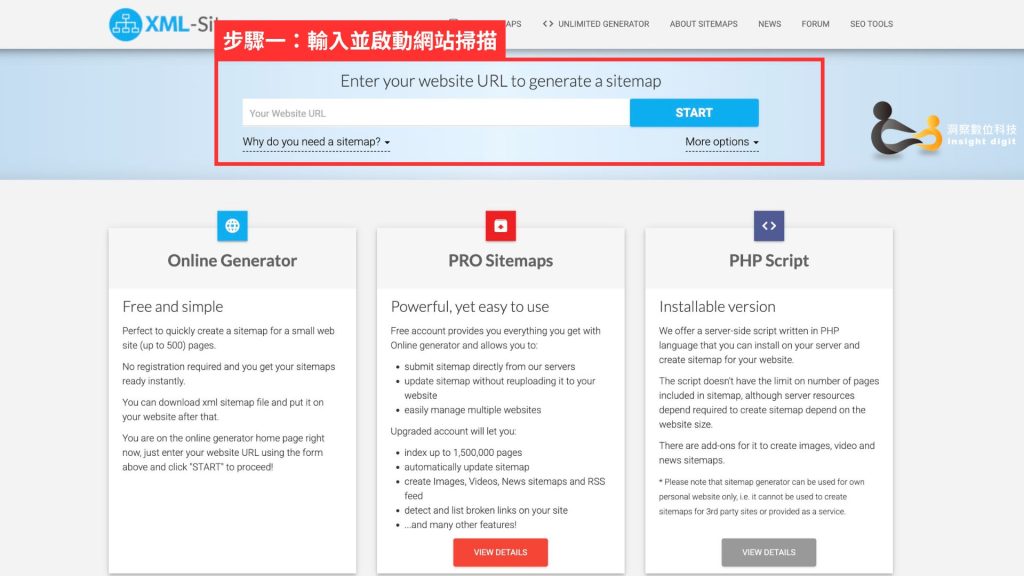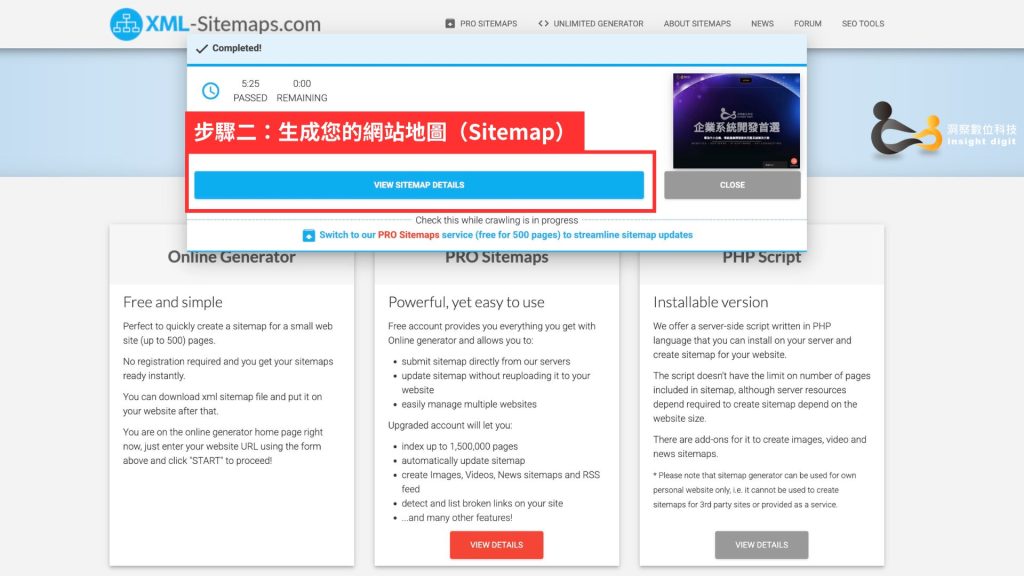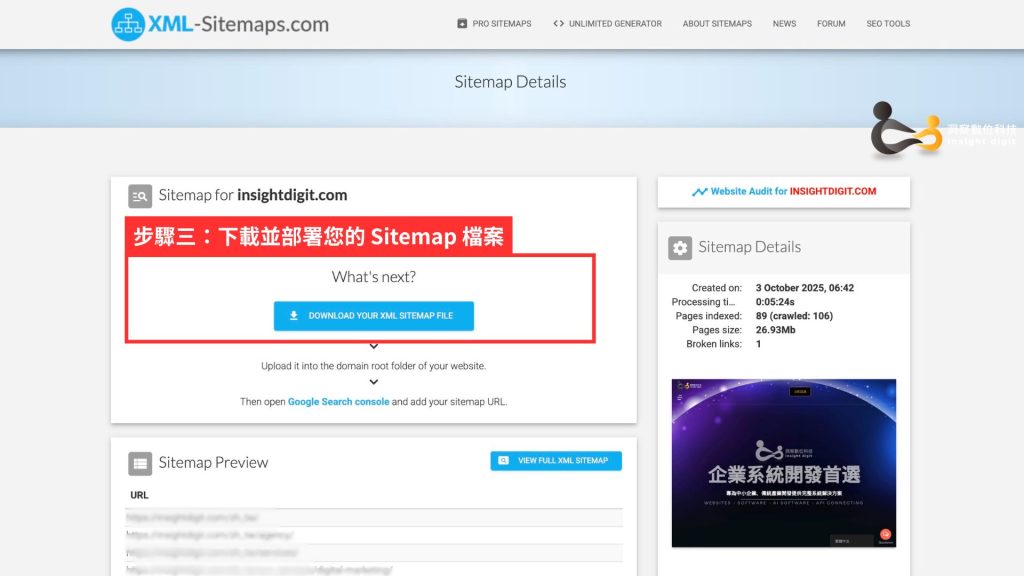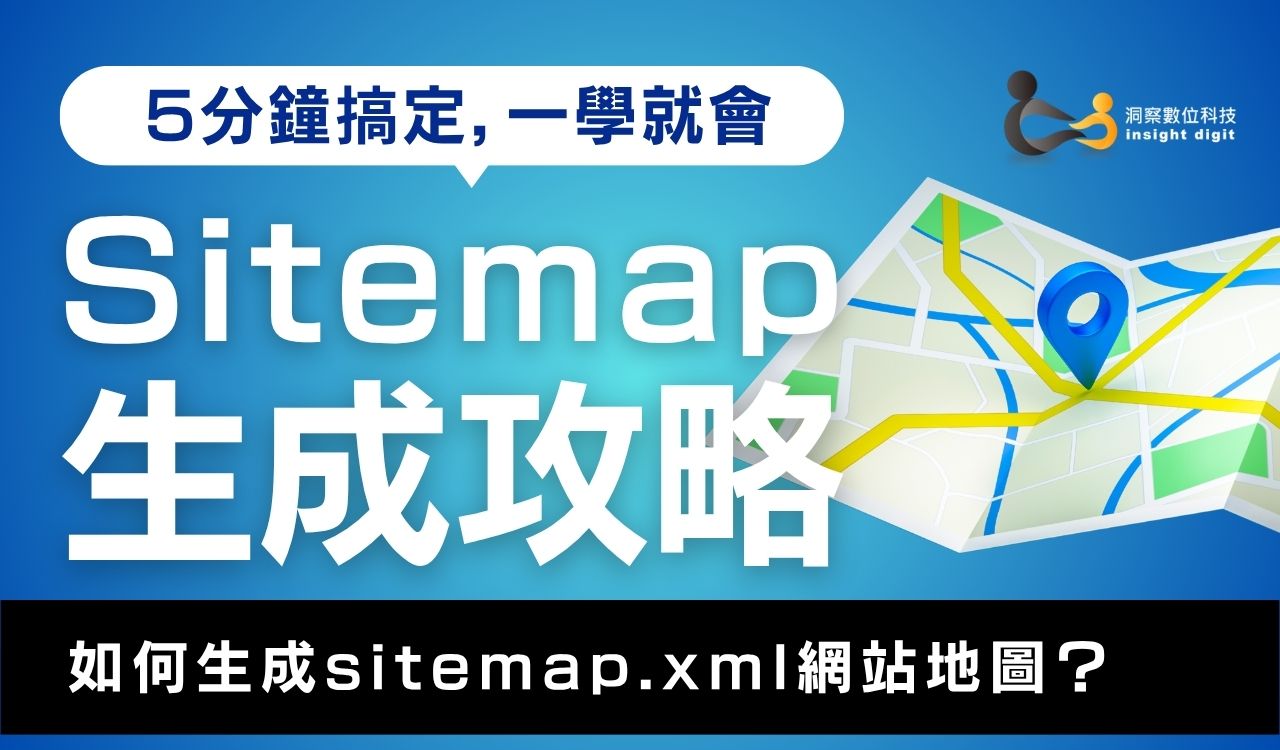What is a Sitemap? How does Google crawler use it to quickly index your website?
SitemapA Sitemap is a standardized file that lists all the important web pages, images, and video links on your website. It's primarily formatted in XML and serves as a navigational map for Google's crawlers and other search engines. Submitting a Sitemap allows crawlers to accurately locate all your website content, accelerating the inclusion and indexing process and ensuring your content isn't overlooked.
What is a Sitemap? (Basic Concepts)
SitemapIt is provided to search engines to readWebsite directory filesImagine it as a bookTable of contents, clearly lists all the sites that are allowed to be indexed by search enginesArticles, pages, images and other resource pagesThe most common type of this document is sitemap.xml Files. XML sitemapSubmit to Google Search Console etc. platforms, the website canMore efficient retrieval, this is the most basic SEO Infrastructure.
It's important to note that there are two main types of Sitemap files:XML(specifically for machine reading) and HTML(Specially for user navigation). In SEO discussions, we usually refer to sitemap.xml file.
How do Sitemaps help Google crawlers?
Sitemap Is the website with Google crawlerThe most efficient way to communicate with Google is to provide a list of all websites.Indexable web pagesThe list, thisSitemap"It has the following key features:
- Discover the full content: Help crawlers quickly and comprehensivelyDiscover、Crawl(Crawl) andindex(Index)Website content.
- Reduce web page omissions: Especially suitable forLarge, complex, or newly launchedThrough Sitemap, the website can actively "notify" Google about the existence of its content, effectively reducing theInternal linksInsufficient or complex website structureMissing web page.
- Accelerate the collection speed: Make website content more accessible faster Google Indexed, which is crucial for ranking timely content.
In short, Sitemaps ensure that Google can effectively use itsCrawl Budget, spend your time crawling important pages instead of navigating the maze of websites.
A must-read for large or new websites: Which websites are most in need of submitting a Sitemap?
Every website should submit a sitemap. However, for certain types of websites or situations, submitting a sitemap is essential SEO infrastructure. It helps search engines discover and index your pages faster and more completely, ensuring that your content is correctly indexed, significantly improving your site's visibility in search results.
- Large or complex websites:
If your website has a large number of pages (thousands or more) and a complex hierarchy, it may be difficult for Google's crawler to fully crawl all of the pages. Sitemaps can help search engines discover and index these deep or isolated pages more quickly. - Newly launched website:
New websites usually lack external links in their early stages. Sitemap is like a "self-introduction" of the website, which can immediately guide crawlers to understand and index the website content, greatly accelerating the inclusion of new websites. - Websites containing special media content:
If your website contains a large amount of video, image, or news content, you can use specialized Sitemap types (such as Video Sitemap and News Sitemap) to provide additional structured information to help search engines correctly index it in specific search results. - Multilingual Websites (Hreflang):
For differentLanguage versionSitemap can clearly tell search engines the hreflang tagandLanguage version relationship, to ensure that the corresponding pages are displayed correctly in different countries. - E-commerce and dynamic content websites:
Commercial websites such ase-commerce website(including a large number of product pages) or otherDynamic GenerationFor websites with large amounts of content, submitting a Sitemap can ensure that all important and rapidly changing pages are detected by search engines.
4 Key Impacts of Sitemaps on SEO: Accelerating Indexing and Error Diagnosis
Sitemaps have an indirect and fundamental impact on SEO. While they don't directly determine your keyword rankings, they can significantly improve search engine discovery, crawling, and indexing of your website content. For websites seeking to accelerate indexing and increase visibility, proactively submitting a sitemap.xml file is a worthwhile fundamental optimization step. Specifically, sitemaps have a key impact on your SEO performance in the following four areas:
Accelerate the inclusion of new website pages: make content more immediately searchable
Sitemap Like a "website lazy package", it provides Google crawlerA complete list of web pages.
- Shorten the collection time: Allow crawlers toCrawl content more efficiently, significantly shortening the time it takes for new or updated content to beindexWhen you publish a new article or product page, submitting it through Sitemap can helpGet discovered faster, especially helpful in gainingTime-sensitive contentranking.
- Protecting original content: When you publish new content and submit it through Sitemap, it helps the content to beQuick Indexand wasIdentified as the original source, reducing the risk of plagiarism.
Improve visibility of “orphan pages”: ensure important content is not missed
Improve index coverage of web pagesThis is one of the core advantages of Sitemap.
- Solving Isolation Issues: For thoseInsufficient internal links, located on the websiteDeep, orComplex hierarchyIt may be difficult for Google crawlers to find web pages through normal link paths, forming the so-called "Orphan Pages” (Orphan Pages).
- Ensure comprehensive indexing: Sitemap This ensures that these ignored pages are alsoIndex correctlyThis is forLarge number of pages、Complex structureThe website is particularly important to improve the overallExposure opportunitiesandflow.
Easier to track SEO performance
Sitemap Is the website administrator and Google Search Console (GSC) It is an important bridge of communication betweenTracking and diagnosisThe SEO performance of the website.
- Error monitoring: Combine GSC, you can view Sitemap Which pages haveSuccessfully submittedWhich pages are affected bymistake(For example: 404 error, server error) and not included.
- Strategy Adjustment: These data are helpful for website administrators to quickly discover technical problems and conductSubsequent SEO operation strategy adjustments, such as fixing incorrect links, enhancing internal link structure, etc.
Supports various content such as pictures, news, and videos
Sitemap Not limited to standard web links, it also provides information aboutSpecific multimedia and content typesto optimize its presentation in search results.
- Multimedia meta-information: Through specialized Sitemap Types, you can provide information aboutvideo(such as length, category),picture(such as subject, authorization) and other more detailed meta information.
- Optimize search results: This helps search engines betterUnderstanding and PresentationThese contents (e.g.Image Searchor Google Newstags), increasing theirExposure opportunities.

What are the main formats of Sitemap? Analysis of 4 types
The main formats of Sitemap cover the needs of machine and user navigation. The most important ones include XML Sitemap、Text (TXT) Sitemap、RSS/mRSS/Atom 1.0 Sitemap, and for users to browse HTML Sitemap.in,XML Sitemap It is the most commonly used and widely used format. It is not only suitable for websites of all sizes, but also can provide rich URL details to search engines.
Google Search Console (GSC) Currently the main support XML、txt and RSS/mRSS/Atom 1.0 These three formats are submitted.
XML Sitemap (most common, optimization focus)
This is submitted to the search engineStandard format, which is also the most frequently mentioned by SEO expertsSitemap TypeIt is a collection of all important web links. .xml Files can be placed in the website folder, specifically forNotify Google and Bing Other search enginesWhat important pages do you want to index?The main difference between it and HTML type is thatXML sitemapIt is designed forMachine Readableof. Advantages and applicability: It has the widest applicability and strong scalability, and can provide rich information about the website, such as:
- <loc>: The location of the web address (URL).
- <lastmod>: The date the page was last modified.
- <changefreq>: How often the page is updated (e.g. daily, weekly).
- <priority>: The priority of this page relative to other pages on the website.
TXT Sitemap (Simple Version)
Application and characteristics: A TXT Sitemap is aThe simplest URL list, list each URL in a separate line, one URL per line, and save it as .txt format. It does not contain any additional tags or information. Advantages and applicability: Production and maintenanceVery convenient, can be completed using a simple text editor.Fewer pages and simple website architecturewebsite.
RSS / Atom Sitemap (commonly used in blogs)
Application and characteristics: This format is often usedNews Websiteorblog, to provideFrequent updatescontent to search engines and users. Advantages and applicability: SuitableContent updates very frequentlyGoogle Search Console accepts RSS 2.0 and Atom 1.0 feed submissions.
HTML Sitemap (provides user navigation)
Application and characteristics: HTML Sitemap is a HTML web page, lists all sub-pages of the website in categories, just like a websiteNavigation page. Advantages and applicability: Its main purpose is not to search engines, butHelp users understand the website structure, and browse all sub-pages at once, which is the classic design of the website navigation page. Although it still helps crawlers find pages, itsPriority and purposeDifferent from XML Sitemap.
Advanced Sitemap Types: Special Applications and Production Methods for Images, News, and Videos
Advanced Sitemap(such as pictures, videos, news sitemap) can help search enginesUnderstand your multimedia content more precisely,and thenImprove your visibility in specific search results, strive for moreVertical Searchof traffic.
Image Sitemap
help Google Image SearchMore complete collection of images on the website, significantly improving the image contentImage search resultsExposure and traffic in . Preparation method: The image title, description (alt text), and the exact URL of the image should be provided.Image Sitemap ofOnline GeneratorOr professional SEO tools can automatically detect images and include them.
Video Sitemap
Let search engines better understand your video content, such as the video title, description, playback position, video thumbnail, etc., which will help the video content to be more popular in theVideo search resultsto be discovered and gain traffic. Preparation method: It must include the title, description, URL, Thumbnail URL(thumbnail link), and content viewing link, etc.Key meta-informationMany advanced sitemap generators can support the creation of video sitemaps.
News Sitemap
Speed up search engine indexingand process your websiteNews content, especially suitable for news websites or time-sensitive content websites, allowing your news content to be Google News Waiting for the platform to discover. Preparation method: The news title must be strictly provided.release dateand URL. Since news content requiresHigh degree of immediacy, usually need to be written manually or use supportNews Sitemap SpecificationThe generation tool.
Sitemap Generator/Creation Tutorial: A Complete Guide to WordPress Plugins and Online Tools
Production SitemapThrough toolsAutomatically generated, is better than manually writingLess effort and higher efficiencyThe mainstream production methods can be divided into three categories. Webmasters can choose the most suitable one according to their website type and scale. Sitemap Generator:
Method 1: Use WordPress SEO plugins (such as Yoast, RankMath)
If your website is using WordPress Erection, this isMost recommendedalsoThe most labor-savingof Sitemap Generate method. MostHigh-quality SEO plugins, all with built-in automatic generation and updating sitemap.xml function.
- Rank Math: With automatic Sitemap Generate function. You only need to Sitemap Settings > General Copy Sitemap File path, then submit this path to Google Search Console (GSC) That's it.
- Yoast SEO: Can also be automatically generated and updated XML sitemap.
The advantage of these plugins is that when you add or delete pages on your website,Sitemap meetingAutomatic synchronization updates, no manual maintenance required.
H3: Method 2: Use an online generator (XML-Sitemaps.com)
If you are not using WordPress Content Management System (CMS) or if the website has a small number of pages, you can useOnline generation toolTo quickly generate Sitemap file.
- XML-Sitemaps.com: This is the most common online Sitemap GeneratorJust paste the website link and click "Start" to generate it.The free version is usually limited to 500 URLs, which can meet the needs of general small websites.
Operation process: After the generation is complete, click "Download Your XML Sitemap file" to download sitemap.xml File, then upload it to yourWebsite root directory, and then submit it to GSC.

Enter your website URL at XML-Sitemaps.com and start scanning to automatically generate a Sitemap.

After the scan is completed, the system will automatically generate a sitemap.

Download the XML Sitemap file and upload it to your website's root directory.
H3: Method 3: Using a Desktop Tool (Screaming Frog SEO Spider)
For professionals SEO stafforLarge websitesFor example, using desktop crawler software or professional SEO ToolsCan provide more powerful Sitemap Generate andCustomizationFunction.
- Screaming Frog SEO Spider: More professional SEO crawler toolsThe free version is also Limited to 500 URLs, but the paid version has no upper limit on crawling data and provides manyAdvanced Features,For exampleExclude specific page types、Setting Prioritieswait.
RSSeo! (Joomla):If using Joomla When setting up a website, you may consider using a dedicated plug-in software like RSSeo! to generate Sitemap, which has a functional positioning similar to WordPress Yoast SEO.
How to submit a sitemap? Google Search Console (GSC) complete 3-step process
Prepare sitemap.xml fileThe final step is to submit it to Google, so that search engines know the exact location of the sitemap. Submit Sitemap Give Google Mainly through Google Search Console (GSC) It can be done easily in 3 steps:

Submit your Sitemap file to Google Search Console to help Google index your site faster.
Step 1. Confirm that Google Search Console is installed and upload a sitemap
- GSC Management Permissions: You need to have Google Search Console ofAdministrative permissions, and has completed the websiteOwnership Verification.
- Upload a Sitemap: Will be made sitemap.xml fileUploaded to the websiteroot directoryNext (for example:https://www.example.com/sitemap.xml). This is to ensure Google crawlerThe key to being able to find the archive.
Step 2. Add a Sitemap in Google Search Console
- Log in and select a website: Sign in with your Google Account GSC, and select the option you want to submit in the upper left corner Sitemap ofCorrect website resources.
- Go to the submission page: In the left menu,index" section, click "Sitemap" (Sitemaps report).
- Input Path: exist"Added site map", enter your Sitemap File name or relative path (for example:sitemap.xml).
- submit: Click "submit" button to complete.
Step 3. Confirm status and track results
- Tracking status: After submission, your Sitemap It will be displayed belowSubmitted Sitemap" in the list.Google will read and process your Sitemap,The login status may not show "Successful" immediately, but said it has entered Google's processing process.
- No need to submit again: once Sitemap quilt Google Successful access, Google willCheck back regularlyYou do not need to submit the file repeatedly, justRegularly check whether the status is normalThat's it.
- Error review: Through this report, you can view Google access at any time Sitemap time, and whetherSuccessful retrievalArchives, this is tracking SEO performanceimportant link.
Two common Sitemap errors
In Google Search Console (GSC)'s Sitemap report, you may encounter submission failures or processing warnings. Accurately diagnosing these errors is key to maintaining your website's SEO health. Below is a summary of the two most common errors and their solutions:
Sitemap is malformed/contains noindex or duplicate URLs
exist Google Search Console (GSC) submit Sitemap After that, you may encounter submission failures or processing warnings. Accurately diagnosing these errors is essential for maintaining your website. SEO HealthWe've grouped common mistakes into two categories to help you find solutions quickly:
- Error message: "Couldn't Fetch"
- reason: The most common Sitemap URL error (For example, an extra slash or the file does not exist),The server is temporarily unavailable; or most commonly: your The robots.txt file **** mistakenly blocks the Sitemap path.
- what to do: Check your GSC submissions Is the Sitemap URL completely correct?;examine robots.txt file,Remove any rules that block Google crawlers; Make sure your server is in normal status.
- Error message: "Invalid Format"
- reason: Sitemap XML formatNot meeting standard specifications, e.g. XML tag spelling errororThere is a problem with the encoding.
- what to do: use Sitemap GeneratorOr regenerate it with online tools, make sure it isValid XML format.
- Error message: "File too large"
- reason: Sitemap Files exceeding 50MB or containOver 50,000 URLs.
what to do: will be big Split the Sitemap file into multiple smaller files, then create aSitemap index file"To list these small files, finally submit only thisIndex fileGive GSC.
The Sitemap file can be captured, but there is a problem with the content?
This type of error represents Google successfully read the Sitemap, but found in the archive URL linkIt does not meet SEO requirements and will waste Google's crawling resources.
- Problem: There is noindex Tagged web pages
- reason: Sitemap tells Google that this page is important and should be crawled; but noindex The tag tells Google Do not index this pageThis will allow search engines toconfused.
- what to do: Your Sitemap should only list the pages you want indexed.Please remove all noindex The URL of the tag.
- Problem: Sitemap contains duplicate or invalid URLs
- reason: The archive listsDeleted page (404 error)、Duplicate content,orAfter the website was updated, the Sitemap was not updated synchronously(resulting in an outdated URL).
what to do: Regularly check and remove any broken or outdated links(Especially 404 pages). If it isDuplicate content, make sure to onlyCanonical tag setofOfficial websiteListed Sitemap middle.
Sitemap FAQ
Q1. How to create a Sitemap?
You can automatically generate a sitemap.xml file using a WordPress plugin like Yoast, an online tool like XML-Sitemaps.com, or SEO software like Screaming Frog. For detailed instructions, refer to the "How to Create a Sitemap?" section of this article.
Q2. How to draw a Sitemap?
You can automatically generate a sitemap.xml file using a WordPress plugin like Yoast, an online tool like XML-Sitemaps.com, or SEO software like Screaming Frog. For detailed instructions, refer to the "How to Create a Sitemap?" section of this article.
How to draw a Sitemap?
- Gather requirements
- First discuss the website goals with the client or team: for example, official website, e-commerce, and image page.
- Confirm the necessary functions: homepage, service introduction, product page, shopping process, contact form, etc.
- Draft drawing
- You can directly use paper, pen, or a whiteboard, just like drawing an organizational chart, with the homepage on the top and the sub-pages extending downwards.
- For example:
- front page
- about Us
- Services
- Service A
- Service B
- blog
- Contact Us
- front page
- Tool drawing (digitalization)
- After confirming the architecture, you can use professional tools to draw a clearer Sitemap:
- Flowchart Tools: Lucidchart, Miro, Draw.io
- UI/UX Design Tools:Figma、Sketch
- Simple Tools: PowerPoint / Keynote
- After confirming the architecture, you can use professional tools to draw a clearer Sitemap:
- Confirm with the customer
- Give the drawn sitemap to the client or team for review to confirm whether all necessary pages are planned.
- After confirming the Sitemap, proceed to the Wireframe/Mockup stage to reduce the risk of major changes in the future.
- Give the drawn sitemap to the client or team for review to confirm whether all necessary pages are planned.
Q3.How to check the Sitemap?
Can be seen through Google Search Console Sitemap Report Check the status. Simply go to the Index → Sitemap page and you will see:
- The time when Google last accessed the Sitemap
- Whether the retrieval was successful
- Are there any error messages (such as unreadable, format error)?
Usually once a Sitemap is submitted and successfully accessed by Google, there is no need to submit it again.Regularly check whether the report is normalThat's it.
Q4. What is XML sitemap?
XML Sitemap It is a use Extensible Markup Language A website map is written to tell search engines which pages of the website need to be indexed.
It not only lists text pages, but also contains Pictures, videos, news It can be used to store different types of content, so it is currently the most commonly used and SEO-friendly Sitemap format.
Q5. How does a sitemap help a website’s search ranking?
The Sitemap itself It won't directly improve your rankings, but it can help search engines retrieve website content faster and more completely. Large websites、Complex website structure or Websites that frequently update contentSubmitting a Sitemap allows Google to discover new pages faster, indirectly improving the inclusion rate and visibility, and thus having a positive impact on SEO rankings.
Q6. What is robots.txt?
robots.txt It is a text file placed in the root directory of a website that tells search engine crawlers (such as Googlebot) which pages on the website can be accessed and which pages need to be avoided.
Its main function is Manage crawler traffic to prevent sensitive or unnecessary pages from being indexed, common applications include:
- Do not crawl the admin backend (such as /admin/)
- Exclude duplicate content pages
- Guide crawlers to focus on pages that are valuable for SEO
Sitemap is the foundation of SEO, start optimizing now!
Sitemap is the foundation of SEO and the key to whether a website can be quickly understood and indexed by search engines.
With a complete Sitemap, you can not only help Google find all the important pages of your website faster, but also improve the efficiency of inclusion, reduce the risk of missing pages, and thus enhance the visibility of your website and overall SEO performance.
A good website management company will proactively plan and generate a sitemap for you after your website is built. They will also ensure it's properly integrated with tools like robots.txt and Google Search Console, allowing you to lay a good SEO foundation from the start without having to make major revisions later.
Start optimizing your sitemap now! Whether you run your website yourself or hire a professional, helping search engines understand your content structure will help your site stand out in the competitive search results.




